What It Is RV Skirting? Does Your Camper Need It?
This post is focused on the basics of RV skirting. Although relevant to anyone with, or looking to get, a camper, I’ll speak to newcomers to RVing and/or RV skirting to get you up to speed on what RV skirts are, who uses them, when are they used, and more, so you can determine if RV skirting is something you need for your camper. We’ll look at different types of RV skirting and briefly discuss DIY skirting ideas for the handy ones out there that don’t mind persevering through some frustration and breaking a little sweat.
If you are a new RV owner, skirts, and their uses, are important for you to read up on so you can protect your camper before it’s too late. That may sound dramatic, but frozen or burst pipes can be both costly and extremely disruptive to any camping trip, so preparing for RVing in cold weather is important.
What is RV Skirting?
RV skirting is any barrier formed around an RV to protect it from the elements, particularly weather and wind. Typically RV skirting is an insulating perimeter focused on keeping out cold air during winter camping and cold weather camping, but skirts can also be used in the summer to keep cooler air trapped under a camper and internal temperatures down (sometimes referred to as “summer RV skirting“, as opposed to “winter skirting”).
Let’s looks a little bit more into the science of how RV skirts work, using the cold weather example.
How does RV skirting work?
RV skirting works in two main ways : 1) It prevents cold air from blowing underneath your camper, cooling down the undercarriage, and in turn your floors and interior, and threatening to freeze your pipes, and 2) as you generate warm air inside, some of this air inevitably seeps through the floor of the camper, and RV skirting keeps this warm air trapped underneath your rig, preventing it from whisking or blowing away, and allowing it to act as a strong counter to the threat to frozen pipes (and toes!).
Why Do People Use Skirting, What Is The Purpose?
The purpose of RV skirting is to:
- To keep pipes from freezing (which is not covered by standard insurance)
- To maintain running water
- To keep pipes and valves from cracking
- To reduce repair and maintenance costs
- To maintain a warmer environment and floor by preventing cold air from blowing underneath and by trapping warm air underneath
- To protect the underbelly of the camper from weather and debris
- To protect tires, especially when paired with RV tire covers (check out dual-axle tire covers here)
- To maintain a cooler environment in summer time
- To save on A/C costs during summer time
Ultimately, people use RV skirting to help protect their RV from weather and wind, while benefiting from a more comfortable living space.
What Are the Different Types of RV Skirting?
There are many ways to skirt an RV, though they vary wildly in their effectiveness and ease-of-setup. For the budget-shopper, there are DIY solutions that are passable for a season or two, but most move on from that pretty quickly out of frustration and ongoing expenses.
The different RV skirting options are:
- Vinyl skirting (e.g. EZ Snap)
- Inflatable skirting (e.g. AirSkirts)
- DIY Skirting (e.g. styrofoam board, hay, wood, etc.)
In terms of commercial skirting options, there are many companies that use vinyl skirting with some type of fastener to attach it to your rig. Vinyl skirting can vary considerably in the exact material used and how they are setup. Sometimes drills are needed to “pin” the skirts to the rig, hence the phrase “camper underpinning” that has become synonymous with RV skirting (see: ‘Camper Underpinning vs RV Skirting: Are They The Same Thing?’). Modern solutions, like those from EZ Snap, have moved beyond drilling, and are now using various forms of adhesion.
Here at AirSkirts, we do inflatable skirting, where skirt tubes simply hold in place with air pressure, with d-rings to attach them together for especially windy conditions. Additionally, trapped air functions as a natural insulator so you aren’t simply blocking the wind (think older school “wind skirt” terminology, though it is still used today) but rather forming an insulating perimeter around the rig (see “RV Skirts: Don’t Just Block Cold Air, Insulate Too!“).
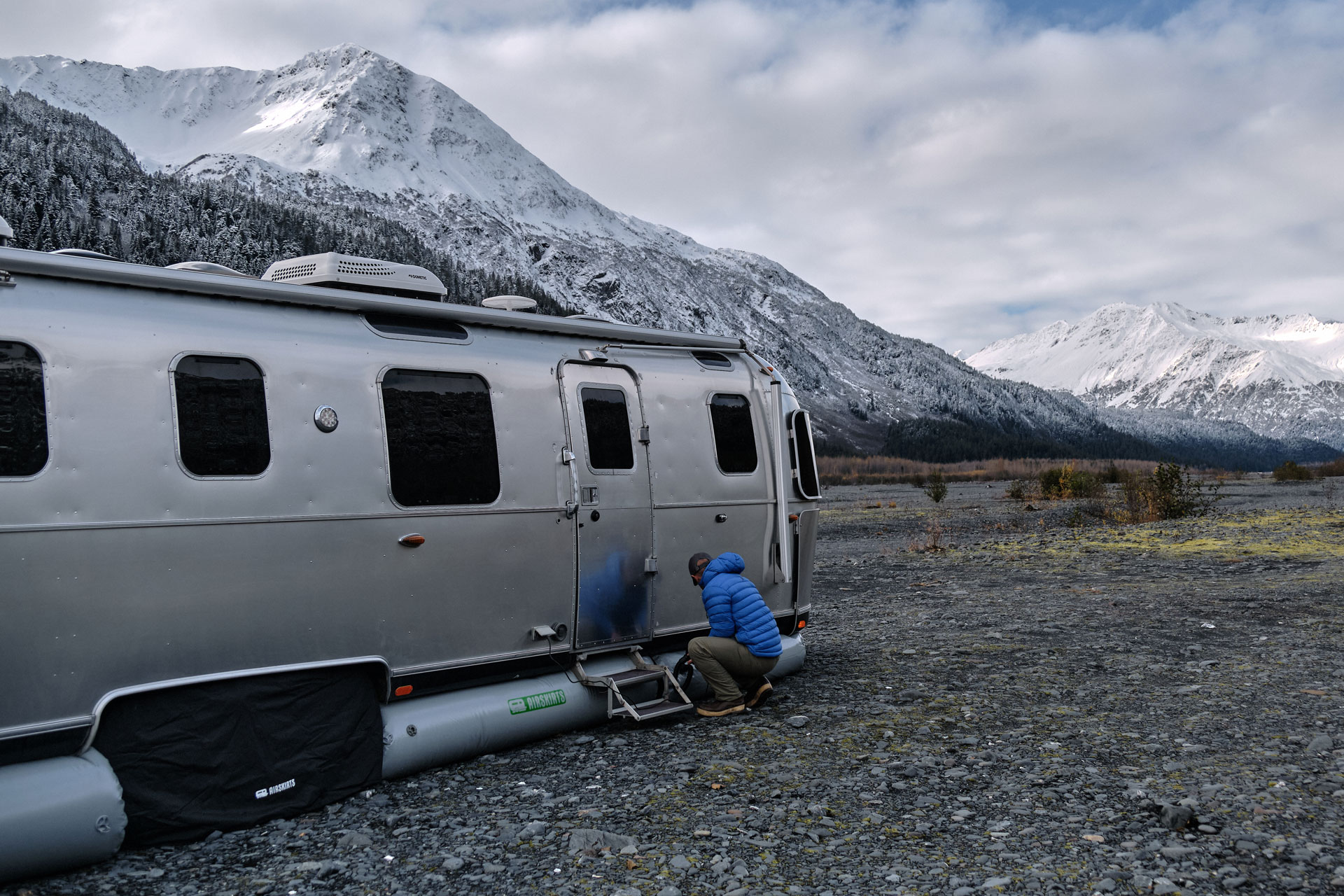
Example of inflatable skirting
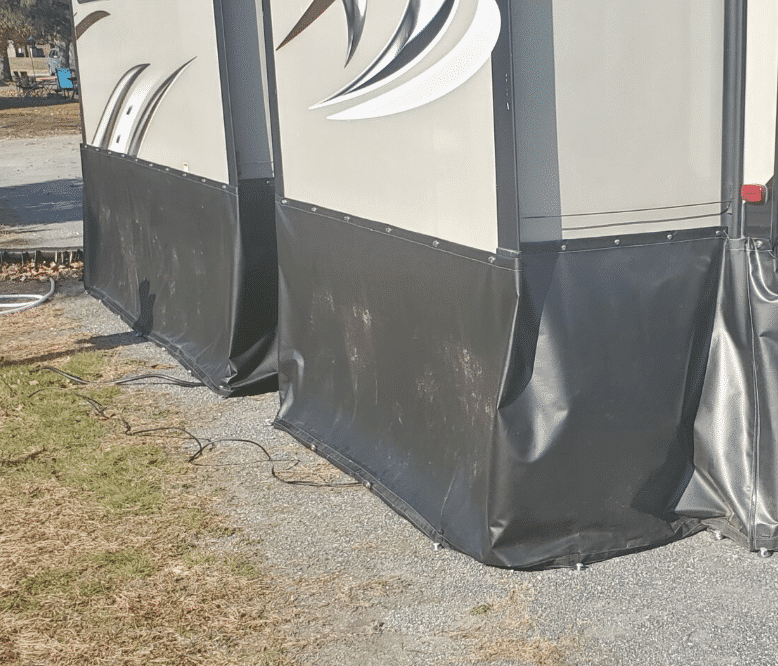
Example of vinyl skirting
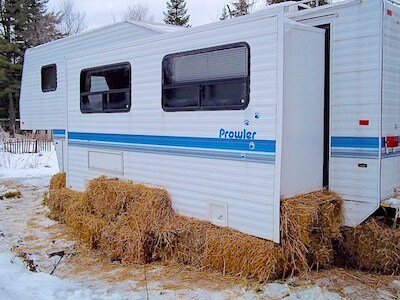
Example of hay skirting
DIY and Alternatives to RV Skirting
There are no real alternatives to RV skirting, if you are cold weather camping, it’s almost a must, but the DIY options tend to be more more affordable, but usually must be disposed of after a single season (“RV Skirting Ideas: 5 Ways to Skirt Your Camper for Insulation”). DIY skirting options include:
- Styrofoam board
- Hay bales
- Plywood
- Snow (as available)
Between commercial and DIY, there are a lot of options. It can be overwhelming. If you aren’t on a budget, definitely save yourself the pain of a DIY setup unless that type of thing is your cup of tea. We are of course partial to inflatable skirting here at AirSkirts due to it’s effectiveness, ease of setup/breakdown, ability to pack away small, and the fact that you don’t have to adhere anything to your expensive camper.
With that said, here is some specific criteria to keep in mind when considering an RV skirting solution:
- Ease Of Installation Or Setup
- Portability
- Insulating Capability
- Durability And Resistance To The Elements
- Longevity And Usable Lifespan
- Appearance
- Price
These were taken from the article “RV Skirting: What It Is, What Your Options Are” where each is gone into in more detail.
Closing Thoughts
We hope we’ve answered your questions about what RV skirts are, how they are used, and if you need them. Now go check our selection RV skirting kits, with a guaranteed fit for your camper. The last thing I’ll leave with is some links that you might find helpful as you move forward with your RV skirting research and, ultimately, buying decision.
—
RV Skirt Kit Selection Tool (just input type, length, and ground clearance)
RV Skirts: Don’t Just Block Cold Air, Insulate Too!
The Simple Things Matter – So Your RV Skirting Should Be Simple Too

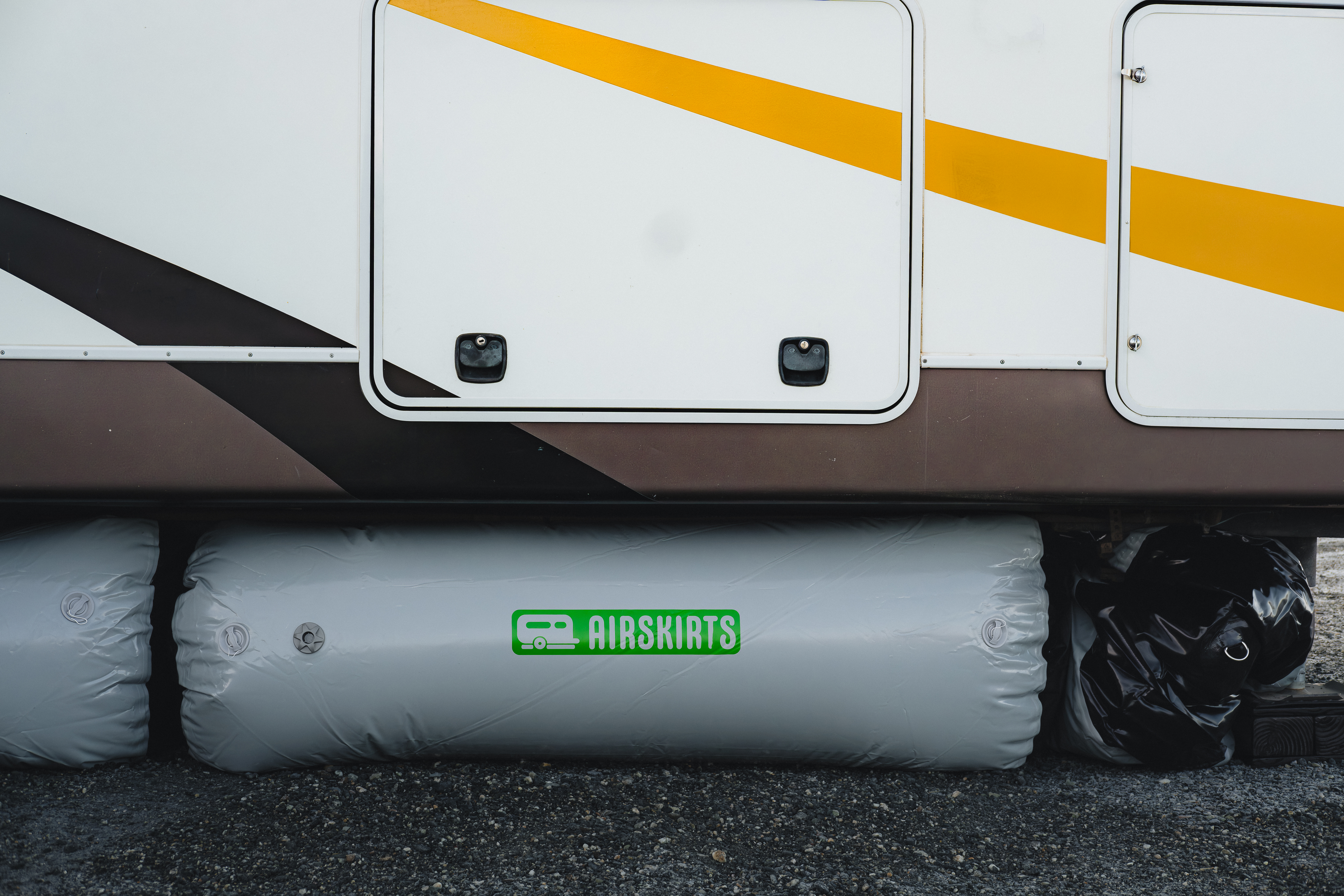
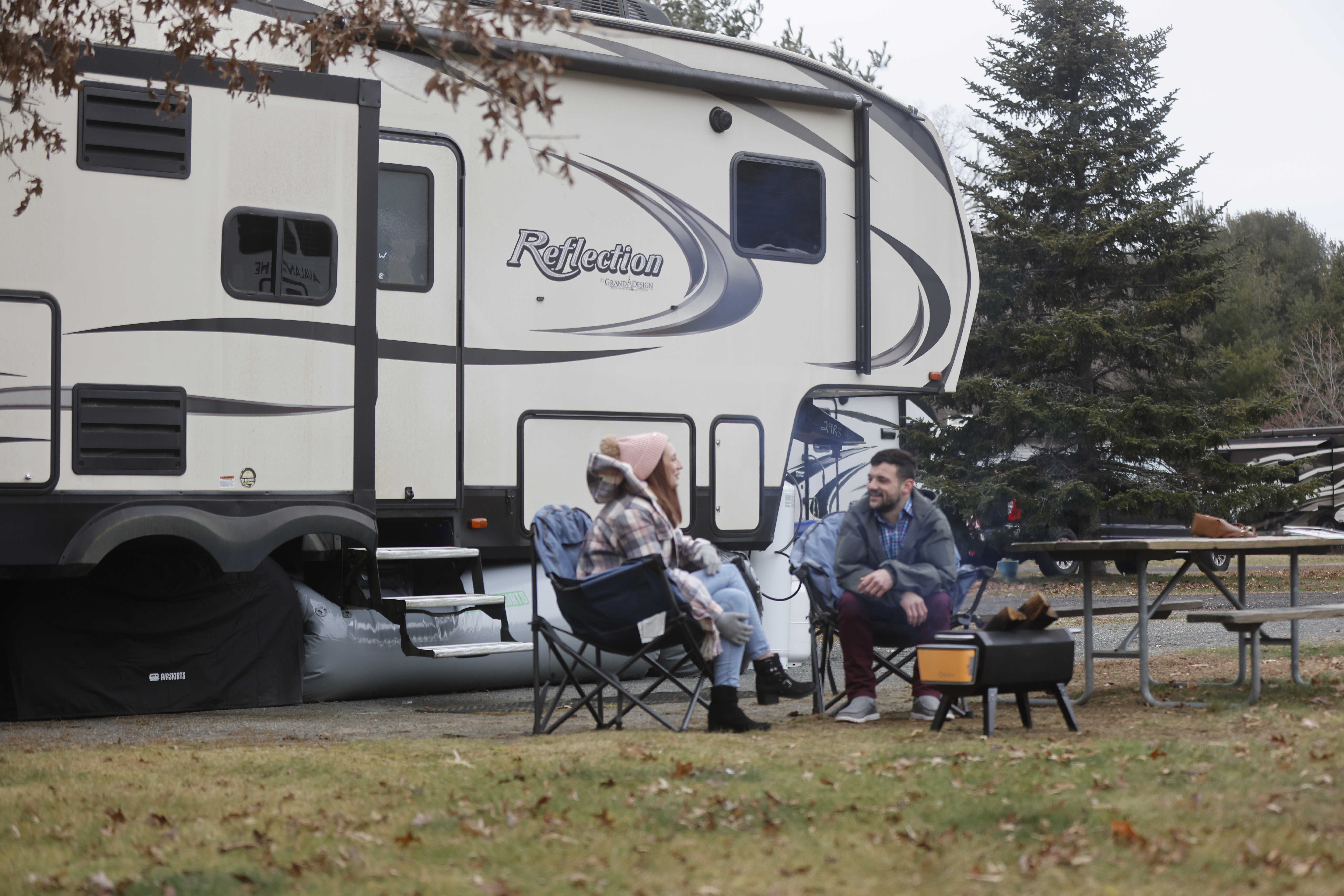

My new camper has an insulated, enclosed underbelly. Do I still need skirting? We only camp from May to October.
Hey Bill, there are a some nice benefits to skirting, even during warm weather, including reduced energy costs. (You can read more here: RV Skirting in Summer: Does it Help Keep My Camper Cool?. As for the insulated underbelly, it is probably sufficient for most of the cold weather you’d experience during those months, but we have had many reports of frozen pipes even on the enclosed underbelly RVs. So depending on where you will be in that October timeframe, you might want to have skirts ready for unexpected freezes.
Hey people!!!!!
Good mood and good luck to everyone!!!!!
Yea,don’t forget the makeup ,Good luck 2 you’ll need it
Hi. I am wondering if it will help lower my propane bill? And how do I get to the black and grey water valves? They are in a ways under my camper. It looks like I might just need to leave them open. I have a heating strip for the tanks that came with the rv.